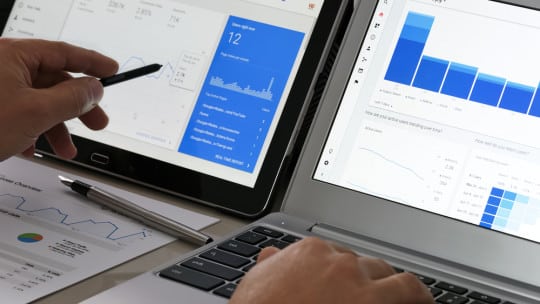
As a reporting powerhouse, Google Analytics has the potential to help communications professionals make more strategic decisions. But too often, website analytics aren’t owned by the communicators who make decisions about content and messaging strategy at their organizations.

Paul Headley, director, client strategy and analytics at Phoenix, Ariz.-based marketing agency ZOG Digital (an Investis company) and one of the firm’s resident analytics experts, sees Google Analytics as a crucial piece of communications measurement. “Without a measurement strategy, it’s difficult to assess and make recommendations for when and from where to deliver future communications,” he says.
Similarly, Cassie Katz, who leverages Google Analytics often in her role as director of marketing at Professional Services Council—a membership association for the government technology and professional services industry—says data drives her decisions when it comes to website optimization.
Headley and Katz will be sharing Google Analytics case studies and best practices at PR News’ Google Boot Camp for Communicators, July 19 at the Yale Club in New York City. (Headley will also be leading a hands-on Google Analytics workshop to get attendees more comfortable using the tool.)
Below, the duo offers some helpful questions and tips to keep in mind as you develop your Google Analytics strategy.
Before you start applying insights garnered from Google Analytics, it’s important to take an audit of what your organization already does in terms of communications measurement. Headley suggests communicators evaluate their existing analytics strategy as follows:

- How do your communications resonate across channels?
- Who’s interacting with your messaging, when, and from where?
- Do you have protocols in place to track your content across your diversified channel mix?
Katz, who recently made significant improvements to the Professional Services Council website with the assistance of Google Analytics, offers the following use cases for the tool:
- See what pages users gravitate to—and aren’t gravitating to—when updating a website.
- Determine the webpages where users are most likely to leave your site.
Katz’s recommendations, based on those determinations:
- Make sure the most viewed pages are easily visible and quickly accessible from your homepage.
- Develop a call to action on pages with the highest bounce rates so users continue to engage on your site.
- If there is a web page for which you want to increase visibility, consider renaming and reformatting that page and reducing the number of other options on the home page so users are more likely to gravitate to the high-priority page.
Join Cassie, Paul and other SEO experts and communications professionals from Cisco, Verizon, CFA Institute, Burson-Marsteller and Spark Foundry at PR News’ Google Boot Camp for Communicators, July 19 at the Yale Club in New York City.
Follow Paul: @PaulHeadley2
Follow Cassie: @CassieKatz
Follow Sophie: @SophieMaerowitz
